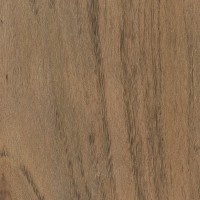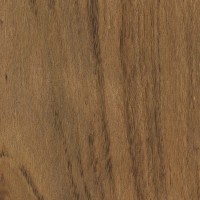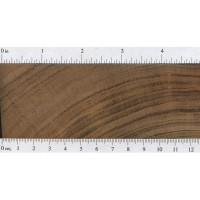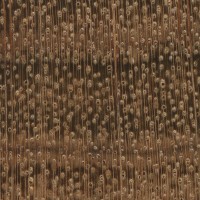 |
Common Name(s): Hububalli, Hububali Scientific Name: Loxopterygium sagotii Distribution: South America Tree Size: 40-80 ft (12-24 m) tall Average Dried Weight: 43 lbs/ft3 (685 kg/m3) Specific Gravity (Basic, 12% MC): .54, .69 Janka Hardness: 1,030 lbf (4,570 N) Modulus of Rupture: 14,620 lbf/in2 (100.8 MPa) Elastic Modulus: 1,831,000 lbf/in2 (12.63 GPa) Crushing Strength: 6,990 lbf/in2 (48.2 MPa) Shrinkage: Radial: 3.4%, Tangential: 7.2%, Volumetric: 11.1%, T/R Ratio: 2.1 |
Color/Appearance: Heartwood primarily light reddish brown, commonly with darker streaks.
Grain/Texture: Grain is generally straight, but may also be interlocked or wavy. Uniform medium texture with good natural luster.
Endgrain: Diffuse-porous; solitary and radial multiples; large pores in no specific arrangement, very few; parenchyma not visible; narrow rays, spacing normal.
Rot Resistance: Rated as moderately durable to durable; moderate to poor resistance to insect attacks.
Workability: Overall easy to work with both hand and machine tools. Glues, turns, and finishes well, and able to take a good natural polish.
Odor: No characteristic odor.
Allergies/Toxicity: Besides the standard health risks associated with any type of wood dust, no further health reactions have been associated with Hububalli, however, other species in the Loxopterygium genus have been reported to cause skin irritation. See the articles Wood Allergies and Toxicity and Wood Dust Safety for more information.
Pricing/Availability: Not frequently imported or available; generally only available as smaller turning blanks. Prices are low to moderate for an imported hardwood.
Sustainability: This wood species is not listed in the CITES Appendices or on the IUCN Red List of Threatened Species.
Common Uses: Furniture, cabinetry, flooring, veneer, and turned objects.
Comments: Sometimes touted as an economical alternative to Goncalo Alves. Because of its moderate density, this South American hardwood is much easier to work than most other ultra-dense hardwoods.
The heartwood is fluoresces when put under a blacklight.
None available.








I just got a wand today made out of Hububalli. Beautiful wood and makes for a lovely wand!